Site Links
Howdy, Stranger!
It looks like you're new here. If you want to get involved, click one of these buttons!
Quick Links
Categories
In this Discussion
Who's Online (0)
Big Mac Boy's Boombox
I want to build my BIL a boombox. My plan is to make an active 2-way with DSA115-8 woofers and Dayton Audio KADB-430 board. I haven't decided on tweeters yet.
This is the sim for the woofer.
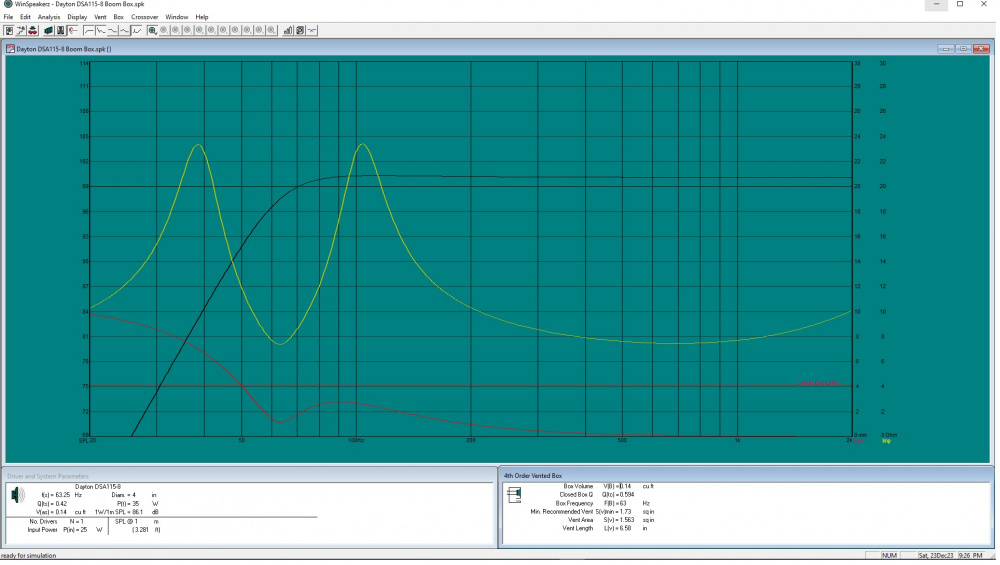
I'd like to try to use a passive radiators but the PE DSA passives seem to be tuned way too low. I need to tune to 63Hz but the passive radiator is already tuned to 28Hz. I've never worked with passive radiators before so, am I missing something or do the marketing folks think they will sell better if they all have a really low but unusable Fs?
Ron
Comments
That is just it's natural Fs and doesn't really play into how it will work in your enclosure. Similar to the way any given diameter and length port will tune different in different size enclosures. I just plonk the info in winISD and it will give you an idea what will/won't work. If the PR gives too low of an enclosure tune with no added weight it will have a rolled off response not unlike a sealed enclosure. If it has a humped response then you can add weight to drop the enclosure tune down to flatten it out.
However keep an eye on the PR excursion. As you add weight and power it will boost excursion.
Looks like that amp actually is listed to do the rated 30watts into 8ohms.
So, at max crank with the DSA115-8, a .1cf enclosure with the DSA135-PR (no added weight) will have an F3 ~75hz, and keep that first vented driver excursion hump just within xmax, until shooting past xmax at ~55hz. PR excursion goes up to near 9mm which is past the 8mm xmech. Though it doesn't pass 8mm until 52hz. By that point the driver is already past xmax, and you'd likely be dropping off applied power via DSP to keep the driver safe. I think you're golden with that combo.
I checked the DSA175-PR too just to see (same driver, power input, and enclosure size): With 25grams added weight will get a hair lower (71hz F3) while keeping PR excursion to about 6mm.
ND140-PR with ~15grams added would work too. I know it doesn't carry the same family look. Just mentioned since it was cheaper.
Thanks. I've never used winISD but will give it a go. I've yet to see a chip amp that doesn't clip at half it's rated output. I guess I better order some passive radiators to play with.
Ron
I would tune my port or PR for maximum useful power handling, and then use Sigma Studio to jazz it back up. Enable the loudness-based EQ curve capabilities like the big boys at JBL and Google. Those filters are VERY easy to enable by just dragging a few things around.
Sorry to be the bearer of bad news, but I don't think you're gonna have this project done in time for Christmas.
Unfortunately winISD isn't the most awesome to work with regarding PRs. It requires you enter the PR specs each time for different PRs. So no creating a PR database to pick from. And it doesn't have a calculation to start with a rough "ideal" tune so it always starts with 1.766cf enclosure and no added weight on the PR. But hey it is free and reasonably quick to get a tune once you understand what is needed.
This project isn't at the top of the things to do list and there's a lot of tech to get a handle on so I expect it's going to take a while.
One complication with an amp with DSP is you’re stuck with the vendor’s DSP program or you roll your own. If you were planning a passive crossover look at the KAB boards (w/o DSP) instead of the KABD (with DSP) boards. I took a quick look at the KABD-430 user manual and the default SigmaStudio DSP program it ships with. It uses 4 pots to control different functions, depending if the amp is in 4.0 or 2.1 mode (see attachment from user manual). I can tell you more about the DSP program’s innards if you want to go active.
Here's what I do when using WinISD and PRs:
Create a vented project and modify box volume and tuning to meet your needs.
Now create a PR project, enter PR values with no weighting and set box volume to match the vented project. Add weighting to adjust PR. With some PR's you'll see that they won't work, even with no weighting.
I like Unibox for PR designs.
InDIYana Event Website
Ed, my original post said I'd be going active. I intend to use the DSP for the crossovers, baffle step and any EQ that might be helpful. I've done a number of projects with MiniDSP's so I think I can manage this. If I can't I'll holler because I get the impression you know a lot more about DSP than I do.
I've downloaded Unibox and I'll give it a try after I break in the woofers. FS is supposed to be 63 and they measure 70 and 74.
I bought myself a PE strobe for Christmas and I used it on a speaker for the first time tonight. You can freeze a woofer cone in motion if you sync the strobe with the cone. If you un sync the strobe by a Hz you can watch the cones move in slow motion. I break in woofer by setting them side by side and wiring them out of phase and feed them a sin wave at Fs. In this short video you can see what I mean. The phone camera video doesn't work well with a strobe.
https://drive.google.com/file/d/1WB0PJQ7shkqBCjlI4PbIi0dBpYaQYi0V/view?usp=sharing
Ron
When I heard of that thing I immediately wanted to use it to watch a driver hit breakup and see how the cone distorts. Or even watch what the surround is doing lower down where you get those response dips.
I'm sure you'll do fine Ron! Just be aware that SigmaStudio is whole different animal than the MiniDSP interface. I figure anyone who can master SoundEasy can master anything.
I have barely scratched the surface of SE but I had looked at SigmaStudio and it looked manageable to me. Time will tell.
Fret not. You'll be fine. Save early, save often, use descriptive filenames.
I measured the drivers and I came up with a PR design using UniBox that was very close to the design DrewsBrews came up with. With a little DSP magic I might be able to put a small amount of boost on the low end with the right high pass and go sealed. It takes a rather long port to go ported. I think it's time to build a test box.
This project has been on the back burner while I worked on other projects. I'm back at it and hope to bring something to Ankeny so I'm going to do a quick post. I've kind of stepped away from the boombox idea for now. It's quicker and easier to do some powered speakers for now.
I decided to try a pair of car audio tweeters which I haven't really got around to doing much yet except for making sure the 3D printed front panel fits. I chose them because they have a grill and the response curves look OK from the data sheets. I did discover one draw back in that they are modular and the part with the grill and the tweeter which can be removed are not sealed when they are together so I had to 3D print a cap for the back to seal it.
https://parts-express.com/Dayton-Audio-AN25F-4-1-Soft-Dome-Neodymium-Car-Audio-Tweeter-Pair-4-Ohm-275-114?quantity=1
I printed the box in 3 parts.
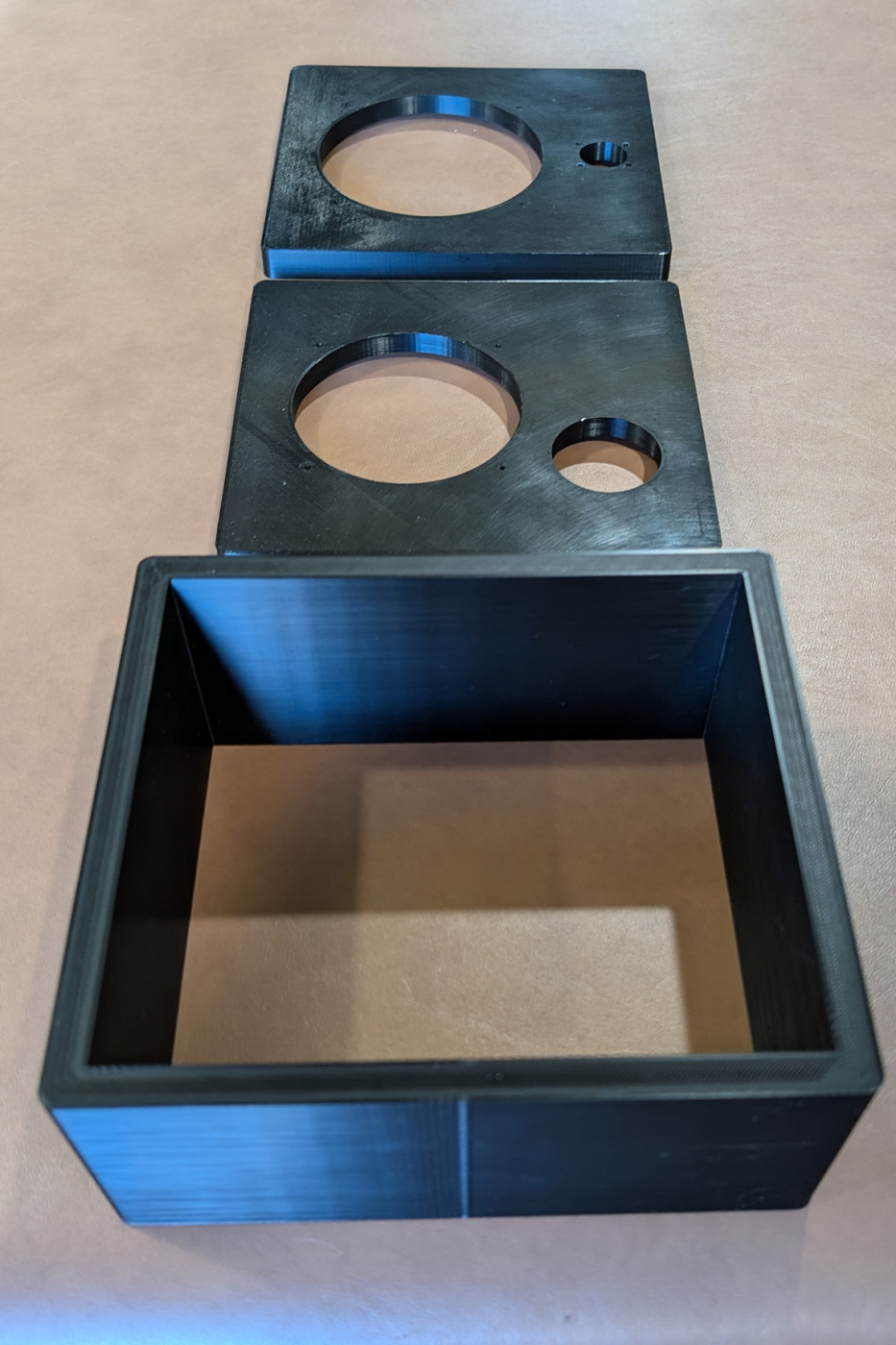
This is what happens when the cables to the print head catches on the Y-axis stepper motor.
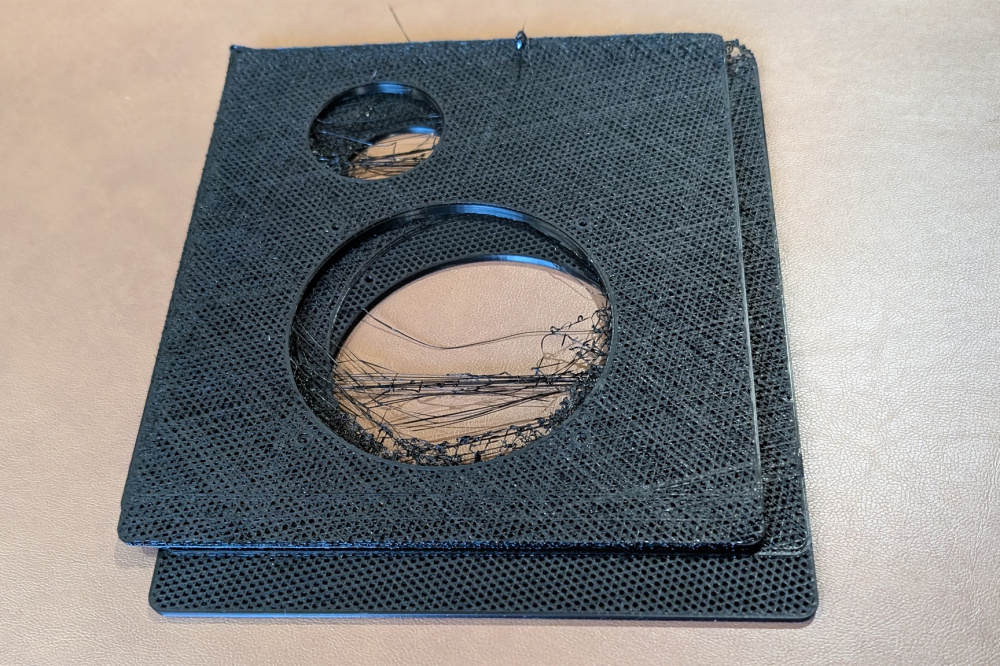
I mounted the woofer, passive radiator and 4 pole speakon connector and put several layers of tape over the tweeter hole so I could measure the response before I printed the other box. I taped the box together so I could take it apart again.
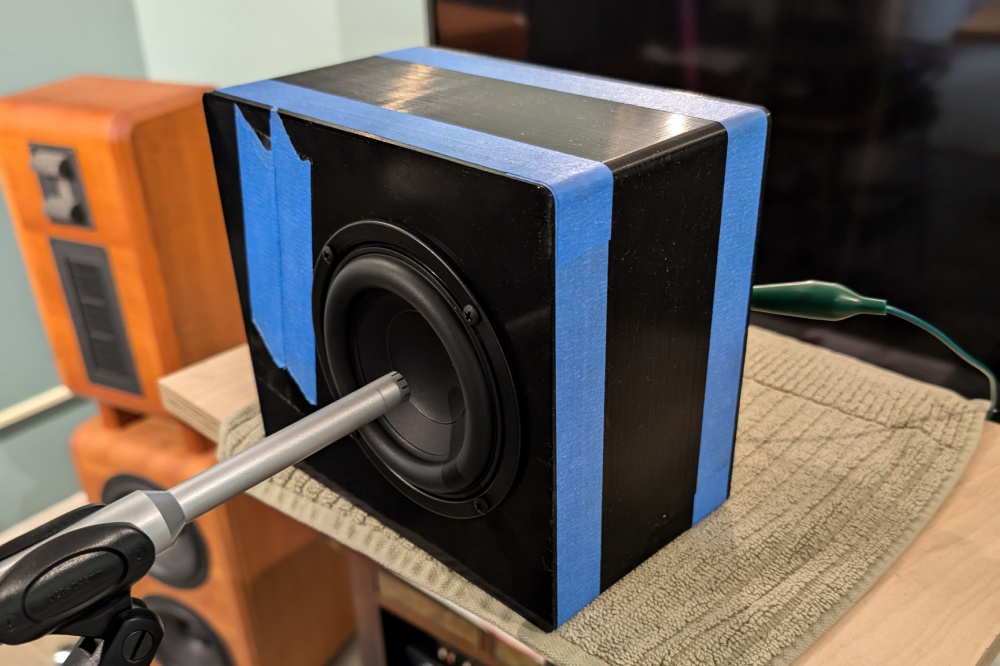
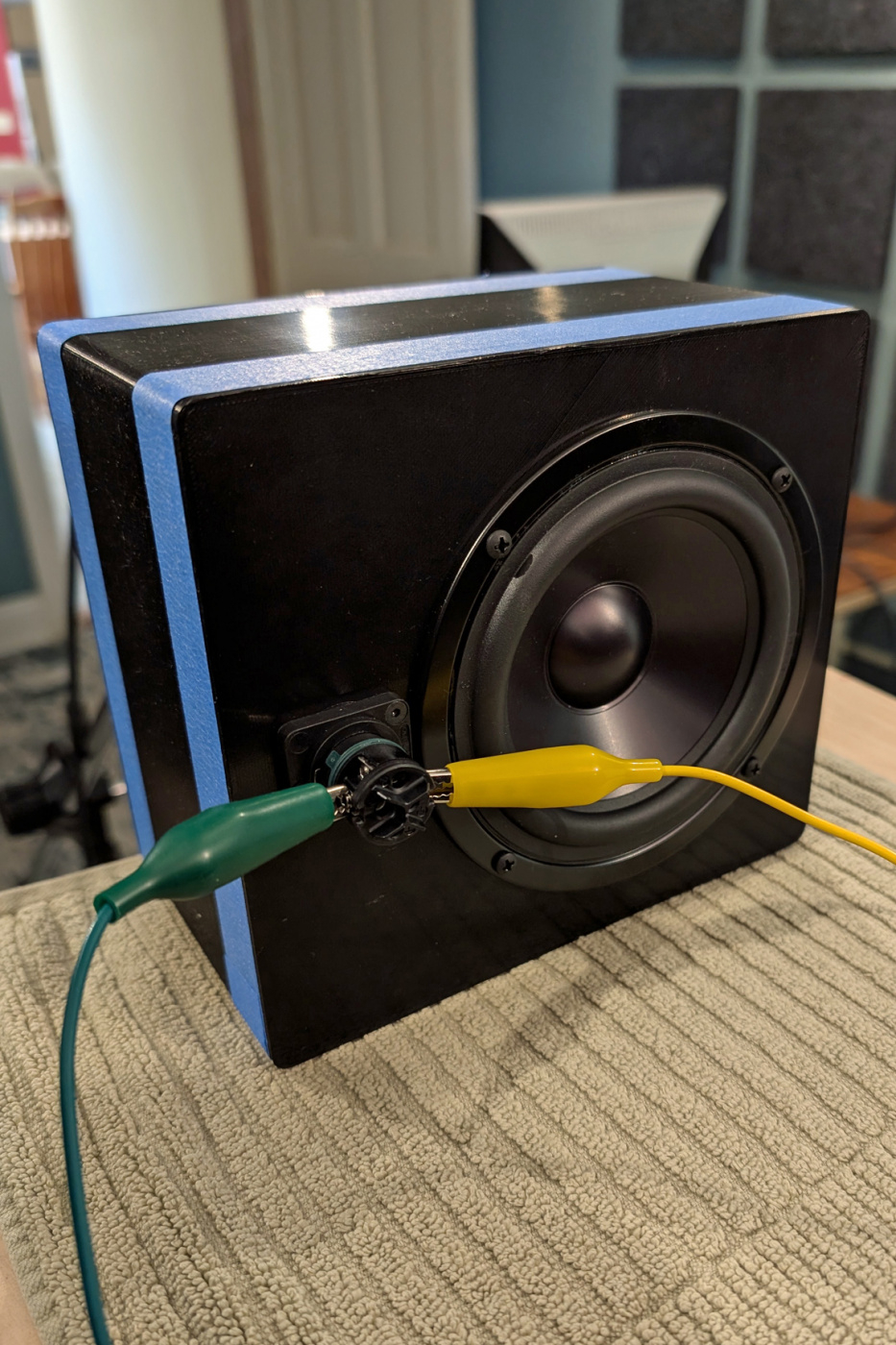
The impedance shows that the box tuning is 55hz.
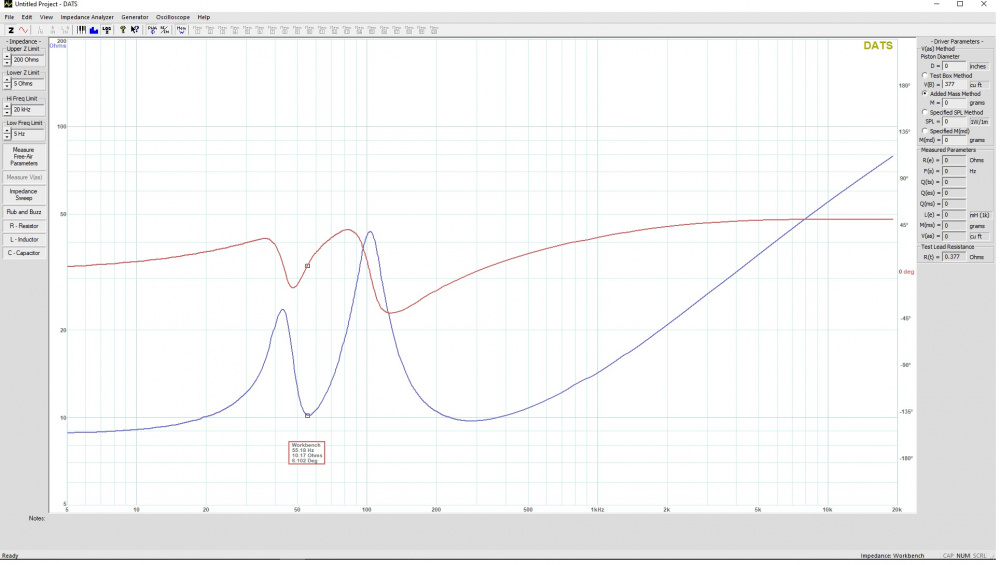
This is the near field response of the summed port and woofer frequency response. This measurement doesn't include a simulated BS. I'll wait until all the drivers are mounted and the inside of the box gets some denim on the side walls.
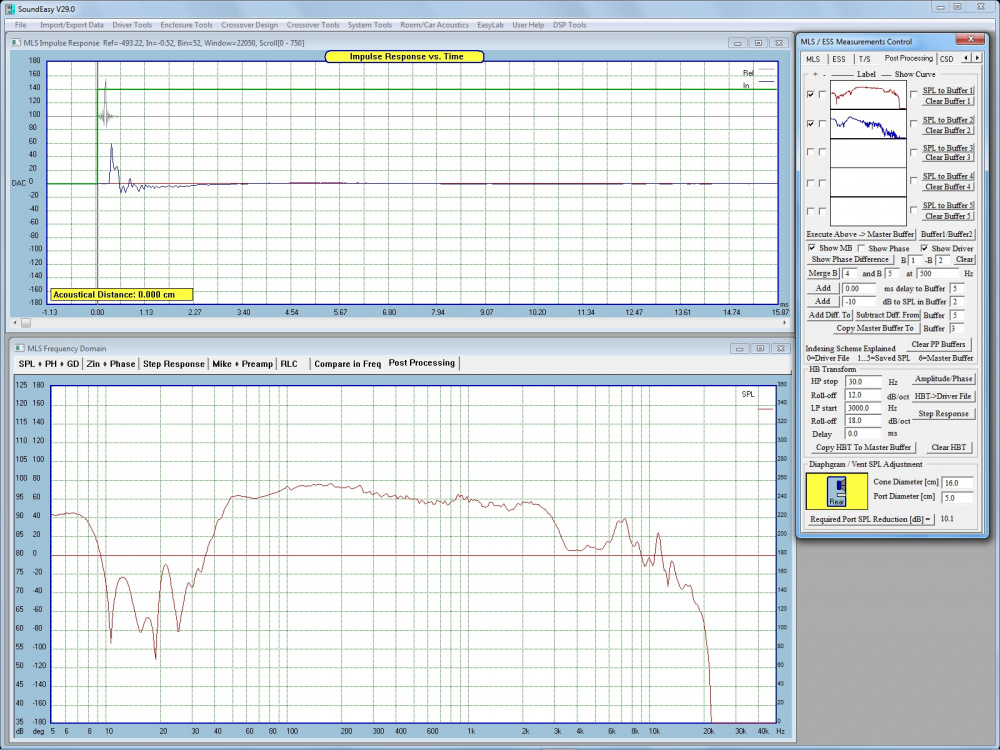
So far I'm very happy with the measurements.
Ron
Those DSA135PR have been heavier than spec every time I've used them.
I used the AN25Ti-4 in one of my builds too, and ended up not using the outer housing at all, but just the core tweeter unit.
InDIYana Event Website
Yes, the tuning is about 10hz lower than predicted. The initial measurements don't look too bad and DSP should be able to compensate. What did you think of the tweeter?
Mine was the titanium/aluminum version of the same. I also used it due to the small form factor and an integrated grill. Honestly, I thought it was a little tizzy sounding. The tweeters were also a little different in measured specs. That said, the HD was just okay as well, usable, but nothing state of the art. Due to where I was crossing it, it worked for the job. While I wasn't disappointed, I feel it could have been better.
InDIYana Event Website
Since my last post I did a lot of work getting my project up and running in time for DIY Iowa. I reprinted all the box parts in metallic blue with added alignment tabs to the fronts and backs and made the center section a tad bit longer.
I also printed rear caps for the tweeters whose housing is not sealed in the back.
Early on I fired up the Dayton 4x30 amp board. One of the first things you need to do according to the instructions is to load a demo file and try to save it to the amp. It failed with an inane error message at which point I set it aside and grabbed a MiniDSP 2x4HD and a 4x50 Sure amp I put together years ago. I just wasn't going to have time to mess with the Dayton board and make it to Ankeny.
I didn't take a lot of time documenting setting up the crossover and EQ but will try to get more measurements. Here are a few I did save.
This is the woofer FR crossed at 2.5k with no EQ.
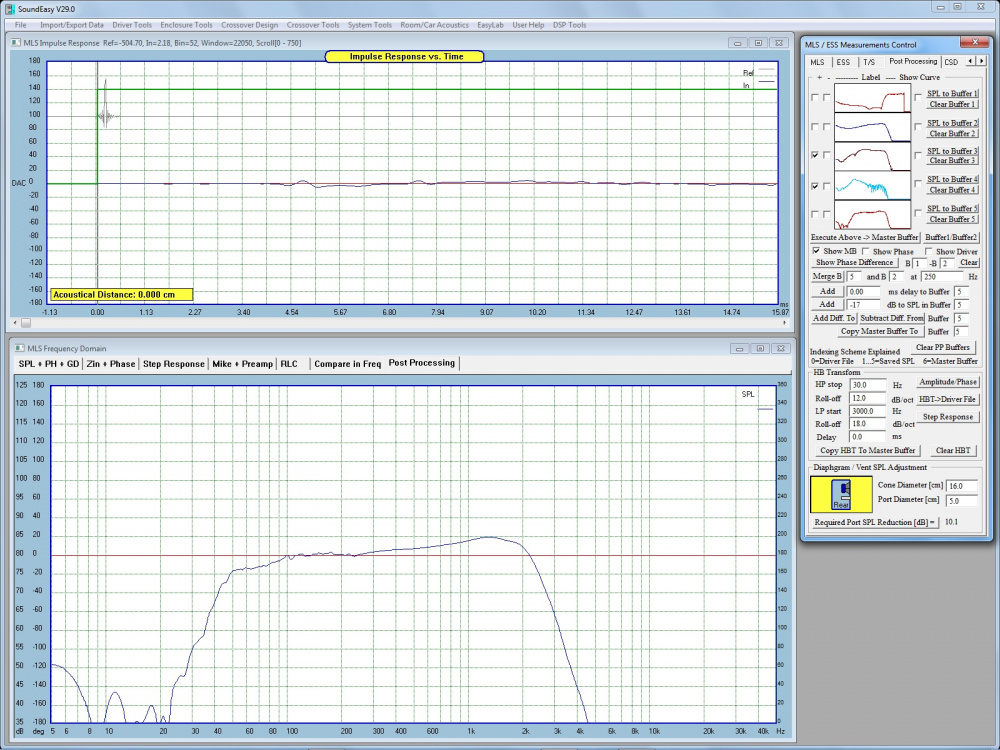
This is the woofer FF with merged NF and PR with EQ
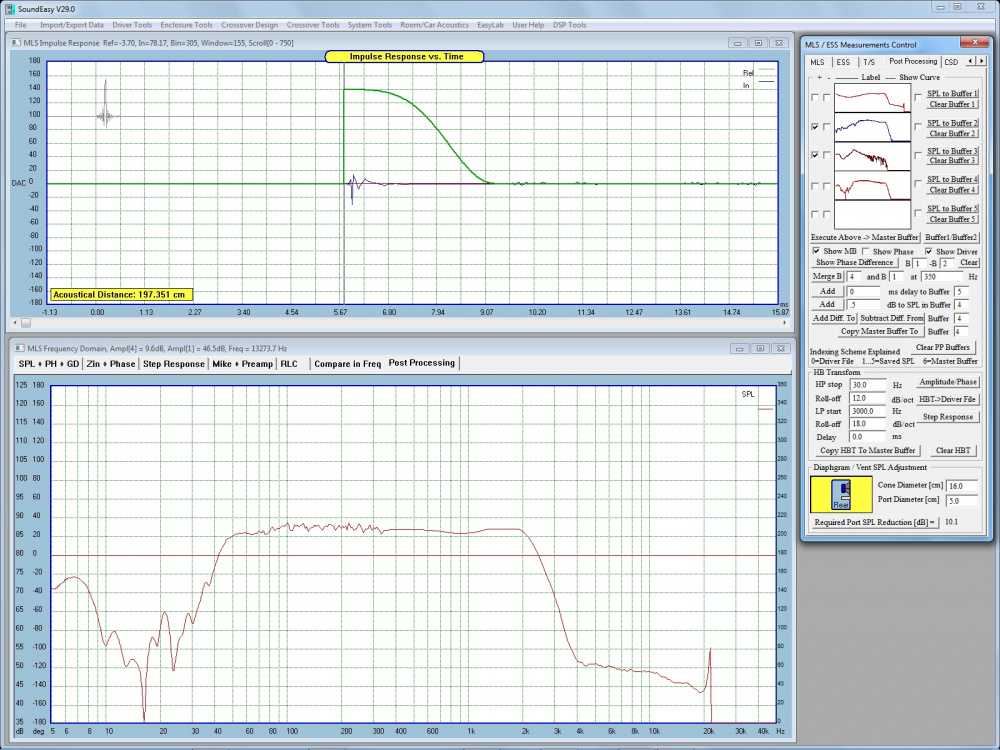
This is the gated FF FR response of the right and left speaker good down to 300Hz.
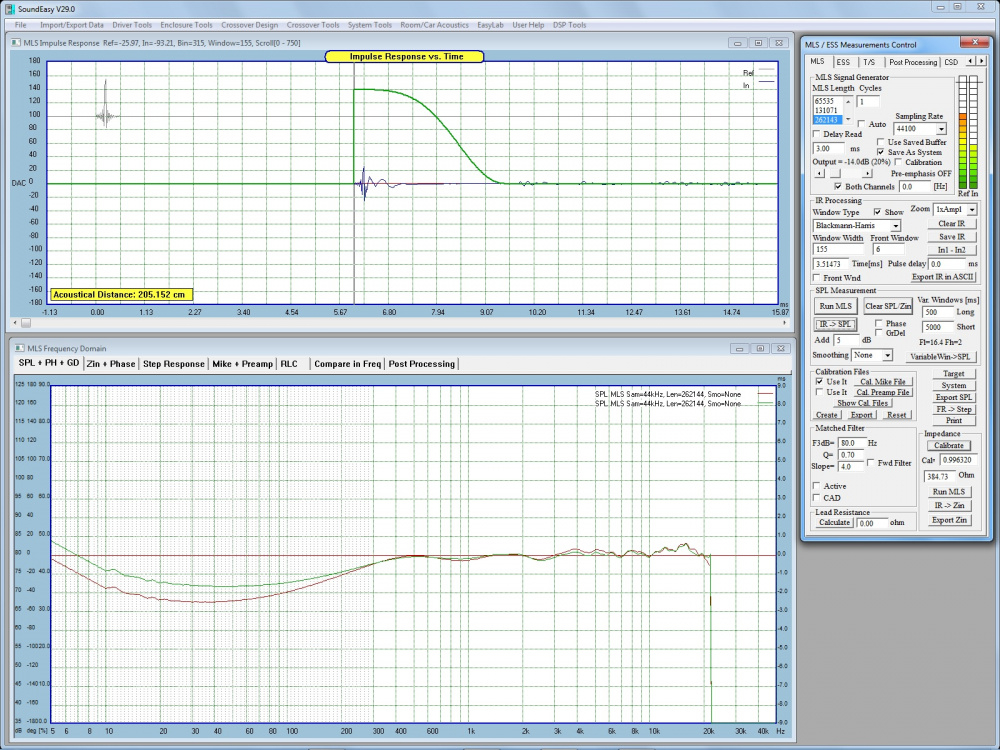
This is the 2.5K crossover reverse null.
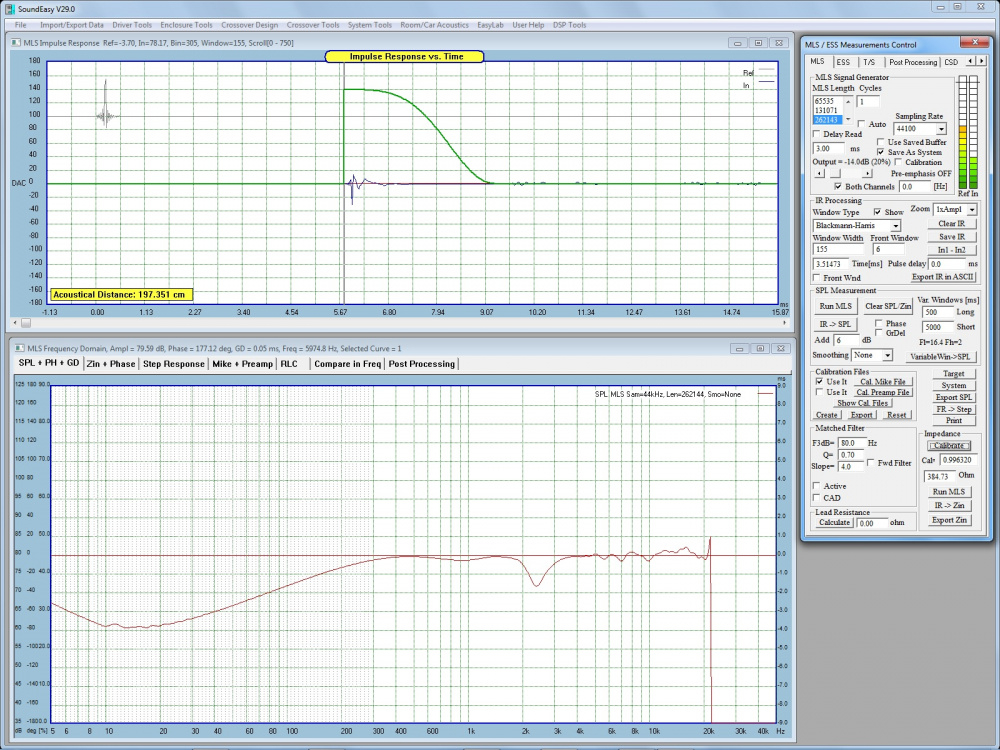
I've been doing a little more work trying to get rid of buzzes. Both the woofer and PR have buzzes that can be affected by pressing on the stamped metal flanges.
The woofer comes with a thin foam gasket that doesn't seem to be very effective so I printed my own gasket. The screws would hold the flange tight to the baffle but the area in between wasn't tight to the baffle and was free to vibrate.
The PR has a stiff fiber ring under the flange with a narrow inner ring of foam. The fiber part looks to be higher than than the foam. So I made a thin 3D printed gasket that covers the whole flange.
Original
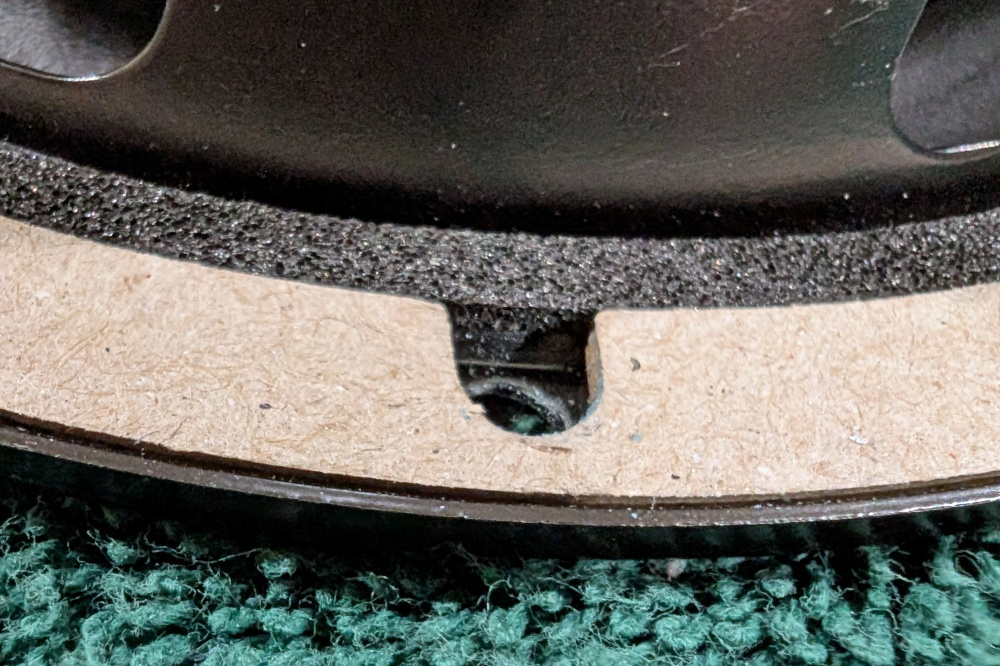
With new gasket overlaid.

Printing your own gaskets, what a world we live in.👍🏻
Maybe I missed it, but does someone have a good clean download site for Sigma Studio?
https://www.analog.com/en/resources/evaluation-hardware-and-software/software/ss_sigst_02.html
Looks there there is a SigmaStudio+ as well: https://www.analog.com/en/resources/evaluation-hardware-and-software/embedded-development-software/sigmastudio-plus.html